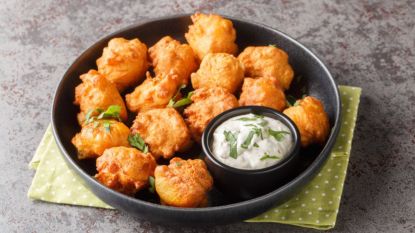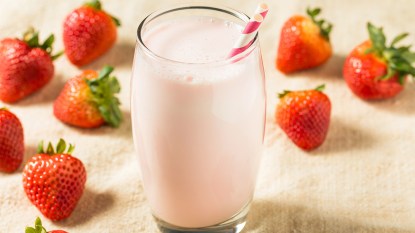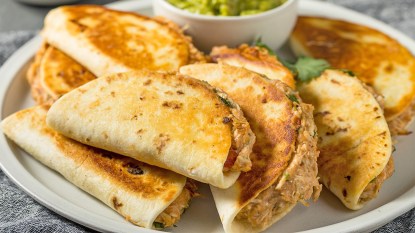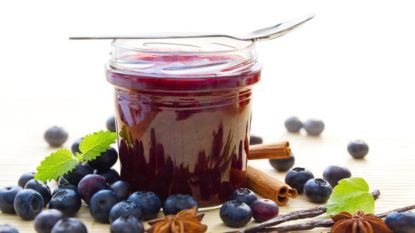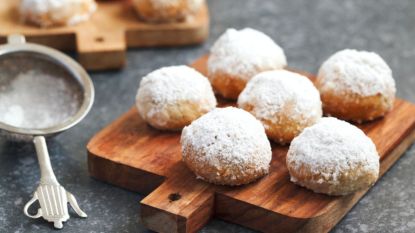Don’t Throw Away That Salmon Skin! It’s Healthy — And Delicious With The Right Prep
Plus, a chef reveals how to turn the skin into a high-protein crunchy treat!
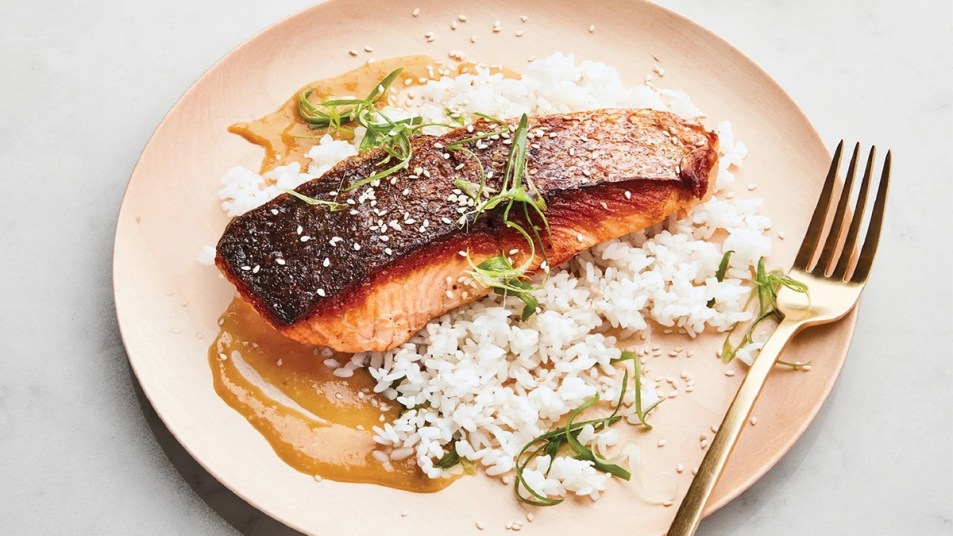
To put it bluntly: If you cook salmon without the skin on, you’re missing out. Sure, skinless fillets are commonly used in salmon recipes, especially when steaming or poaching the fish. But the skin is the source of many nutrients, plus if you use the right cooking method, it adds a crunchy texture to the flaky salmon. And it can even transform into a crispy snack when cooked on its own. Curious to try it yourself now that you know you can eat salmon skin? Keep reading to learn all about the nutrients in the skin that help you look and feel your best — along with tips for cooking it to crispy perfection.
What nutrients are in salmon skin?
Much of salmon’s nutritional goodness can be attributed to the skin, not just the flesh. “Salmon skin is packed with nutrients like omega-3 fatty acids, which are great for heart health and reducing inflammation,” explains Chrissy Arsenault, MBA, RDN, registered dietitian at AthleticMuscle.com. “Plus, it’s a fantastic source of protein and essential minerals like selenium and vitamin D.” (Click through for more on how the right balance of 3-6-9 omega fatty acids can help you lose weight.)
The 3 grams of protein and countless minerals in each 3-oz. serving of salmon skin is a plus for maintaining strong muscles. This fish skin is also credited with having anti-aging perks, thanks to its rich stores of collagen. “Salmon skin contains collagen, a protein that supports healthy skin and joint function, helping you stay vibrant and agile,” Arsenault says.
Overall, these nutrients should give you enough reason to opt for skin-on salmon fillets for maximum health benefits. Also, when cooked properly, crispy salmon skin nicely contrasts the soft and tender flesh.
What cooking methods get salmon skin super crispy?
Despite the numerous ways to cook salmon, only a few can achieve crunchy skin. Dry-heat cooking methods like pan-frying, roasting and grilling remove moisture from the skin so it crisps up. In contrast, moist-heat cooking methods like poaching and steaming add water to the fish, making the skin tough and rubbery.
Do you have to remove scales from salmon skin?
Although the tiny rigid plates on salmon skin, better known as scales, are edible, they can make it harder to chew the fish. To avoid this, double-check with your fish counter that the skin-on salmon skillets you want to buy have already been descaled.
How do you get salmon skin crispy?
With the right cooking method and tricks, you’ll crisp up the skin on salmon fillets in no time. Simply follow these five steps from JD Alewine, food blogger at ThemBites.com, for mouthwatering results.
- Dry the salmon skin. Pat the salmon skin dry with paper towels to remove any excess moisture. This helps in crisping up the skin during cooking.
- Coat the fish in oil and salt. Lightly coat the skin with olive or vegetable oil since they have a high smoke point that aids in crisping. Season with salt and other desired spices for added flavor.
- Preheat the pan or grill. Ensure your pan or grill is heated to medium-high heat before placing the salmon skin-side down. A hot surface helps sear the skin to create a crispy texture.
- Press the fish down. When cooking the salmon in a skillet, press it down gently with a spatula. This ensures that the skin makes full contact with the hot surface and cooks evenly.
- Watch the salmon closely. Keep a close eye on the skin during cooking to avoid overcooking or burning. Cooking times may vary depending on the thickness of the skin and the cooking method. However, salmon is fully cooked when the skin is golden brown and the meat reaches an internal temperature of 145°F.
Turn salmon skin into a crunchy snack
Eating the skin while it’s on the salmon is common; however, it’s not the only way to enjoy it. Salmon skin chips are an increasingly popular snack for those who want a healthier alternative to potato chips, especially among people following keto or a high-protein diet. These chips boast a fishy flavor and crackling texture that’s similar to a pork rind — don’t knock them until you’ve tried them! (Click through to learn more about “dirty keto,” which uses convenience foods to make the diet ultra-easy. Or check out this story to read how protein helps boost weight loss.)
You can buy salmon skin chips such as Irvins Salted Egg Salmon Fish Skin (Buy a two-pack from Walmart, $35.99) in stores or online. Also, they’re simple to make at home using Alewine’s recipe, which can be used for any amount of fresh salmon skin.
Homemade Salmon Skin Chips
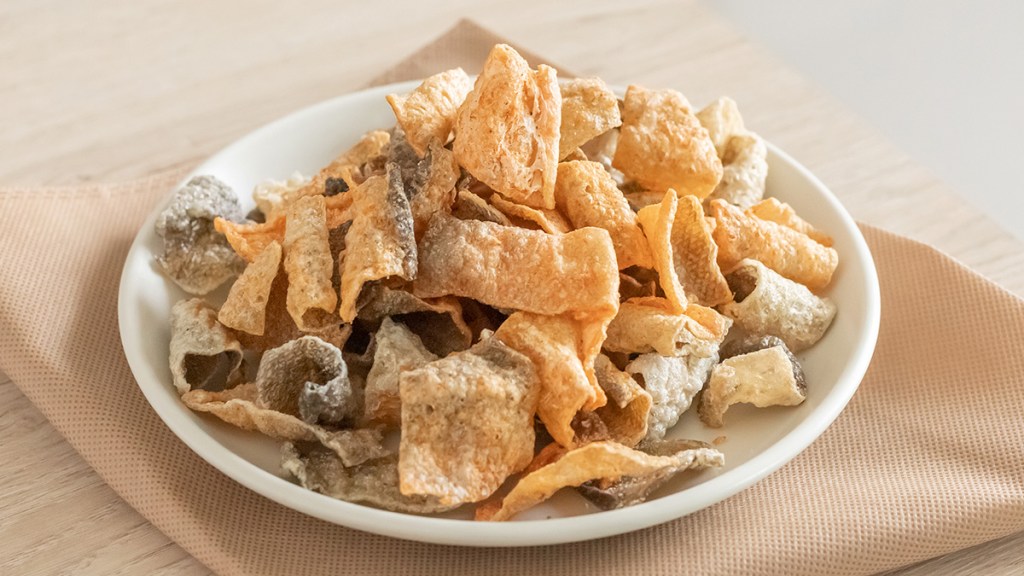
Ingredients:
- Fresh salmon skin, cleaned and patted dry
- Olive oil or vegetable oil
- Sea salt and/or additional seasonings like paprika or crushed fennel seeds
Directions:
- Active: 5 mins
- Total time: 15 to 20 mins
- Yield: at least 1 to 2 servings
- Preheat oven to 400°F.
- Cut salmon skin into chip-sized pieces, about 2 to 3 inches in length.
- Place salmon skin pieces in bowl and toss them with drizzle of olive oil, ensuring they are evenly coated.
- Lay salmon skin pieces in single layer on baking sheet lined with parchment paper or silicone baking mat.
- Sprinkle salt and other seasonings over salmon skin.
- Bake about 10 to 15 minutes or until skin becomes crispy and golden brown. Watch chips closely to prevent burning.
- Once cooked, remove salmon skin chips from oven and let cool slightly. Enjoy!
For tips and tricks to keep in mind when enjoying salmon, read the stories below:
Leftover Salmon Recipes for Speedy and Delicious Weeknight Meals — 5 Easy Ideas
Does Soaking Salmon in Milk Get Rid of the Fishy Smell? We Put It to the Test
Confused When Shopping for Fresh Fish? A Salmon Fisherman Shares 5 Tips for Getting the Best Buy
How to Cook Salmon in an Air Fryer So It Stays Tender and Doesn’t Dry Out
How to Reheat Salmon Without Drying It Out — Or Stinking Up Your Kitchen


